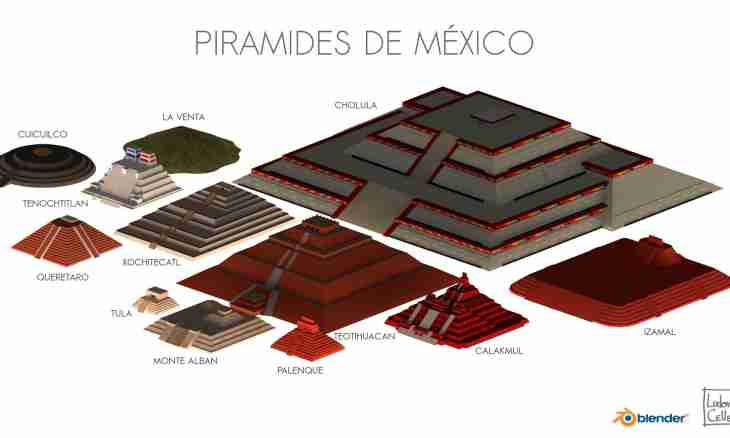Tasks on calculation of the party of the basis of a pyramid make in the book of problems on geometry quite big section. A lot of things depend on what gemoyetrichesky figure lies in the basis and also from what is given in statements of the problem.
It is required to you
- - drawing accessories;
- - notebook in a cage;
- - theorem of sine;
- - Pythagorean theorem;
- - calculator.
Instruction
1. In a school course of geometry mainly pyramids in which basis the regular polygon, that is such at which all parties are equal lies are considered. The projection of top of a pyramid coincides with the center of its basis. Draw a pyramid in which basis the equilateral triangle lies. In conditions can be given: - length of a side edge of a pyramid and its corner with an edge between a side side and the basis; - length of a side edge and height of a side side; - length of a side edge and height of a pyramid.
2. If the side edge and a corner are known, the problem is solved a little differently. Remember that each side side of a pyramid in which basis the equilateral polygon lies represents. It is an isosceles triangle. Carry out its height which at the same time is a bisector and a median. That is a half of the party of the basis of a/2=L*cosA, where and – the party of the basis of a pyramid, L – edge length. To find the size of the party of the basis, to increase rather received result by 2.
3. If in a task height of a side side and length of an edge are given, find the party of the basis on Pythagorean theorem. The side side in this case will be a hypotenuse, the known height – z one of legs. To find length of the second leg, it is necessary to subtract from a square of a hypotenuse a square of the second leg, that is (a/2) 2=L2-h2 where and – the party of the basis, L – length of a side side, side h height of a side side.
4. In this case it is necessary to execute additional construction that it was possible to operate with trigonometrical functions. You were given a side edge of L and height of a pyramid of H which connects pyramid top to the center of the basis. From height point of intersection with the plane of the basis carry out a piece, having connected this point to one of basis corners. At you the rectangular triangle which hypotenuse is the side edge, one of legs – pyramid height turned out. According to these data it is easy to find the second leg of a triangle, for this purpose it is enough to subtract H height square from a square of a side edge of L. Further actions depend on what figure lies in the basis.
5. Remember properties of an equilateral triangle. Its heights at the same time are bisectors and medians. In a point of intersection they are halved. That is it turns out that you found a half of height of the basis. For convenience of calculations carry out all three heights. You will see that the piece which length square you already found is a hypotenuse of a rectangular triangle. Take a square root. Also the acute angle – 30 ° is known to you so to find a half of the party of the basis will not make special work, having applied the theorem of cosines.
6. For a pyramid in which basis the correct quadrangle lies the algorithm will be the same. If you subtract a pyramid height square from a square of a side edge, receive the squared half of diagonal of the basis. Take a root, find the size of diagonal which at the same time is a hypotenuse of an isosceles rectangular triangle. Find the size of any of legs according to Pythagorean theorem, sine or cosines.

